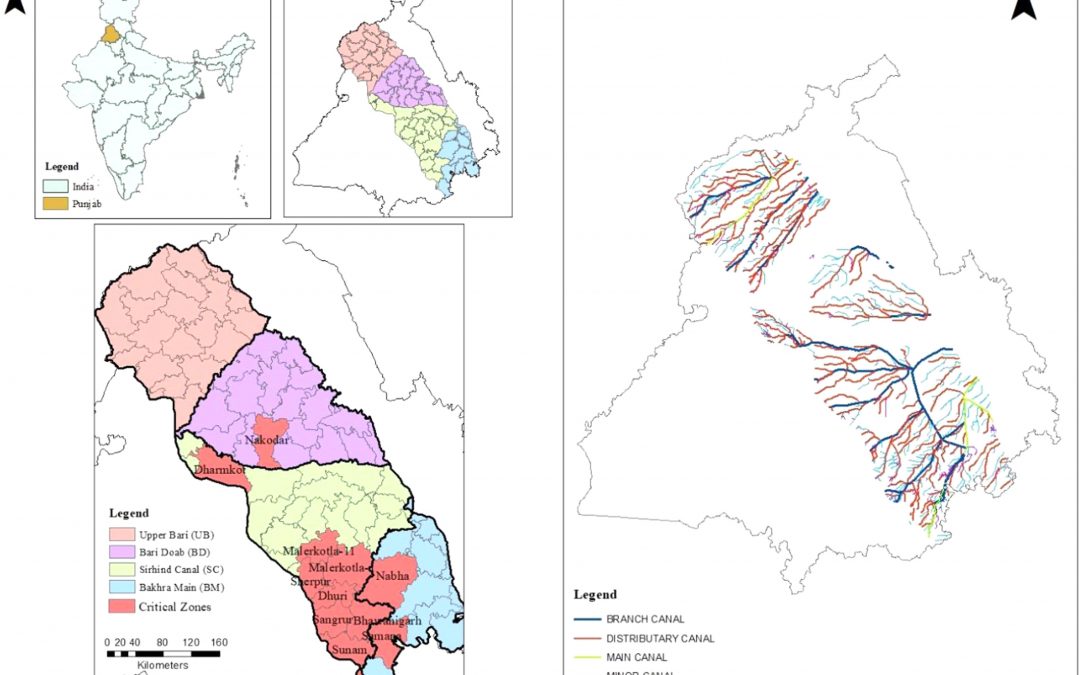Figure: Map of the study area and canal network of central Punjab with critical regions
After estimating the total carbon emissions from groundwater pumping (see the previous blog), I wanted to delineate the critical regions of the study region with high carbon emission rate. Therefore, this present study addressed the expansion of groundwater use that not only resulted in a speedy decline in the groundwater table but also added to the problem of carbon emissions (C-emissions) in Punjab. Estimates of C-emissions from groundwater pumping for irrigation in central Punjab indicated that during the last 15 years (1998 – 2013), the groundwater levels had fallen by 8.89 m; pump set density (per 1000 ha) increased by 45%; groundwater use increased by 140 Mm 3 ; energy requirements increased by 4845.1 MkWh (90%), all this resulted into an increase in C-emissions by 984.1 kilotons (30%). The relationship between carbon emissions and groundwater depth showed that for each meter fall of groundwater level in central Punjab, C emissions will increase by 2.67 g/m³. The present level of groundwater exploitation in Bhawanigarh, Dharmkot, Dhuri, Malerkotla I, Malerkotla II, Nabha, Nakodar, Sangrur, Samana, Sherpur, and Sunam is considered as a threat to the environment and should be targeted to reduce C-emissions.
For your views and consideration, visit Groundwater for Sustainable Development (ELSEVIER).

